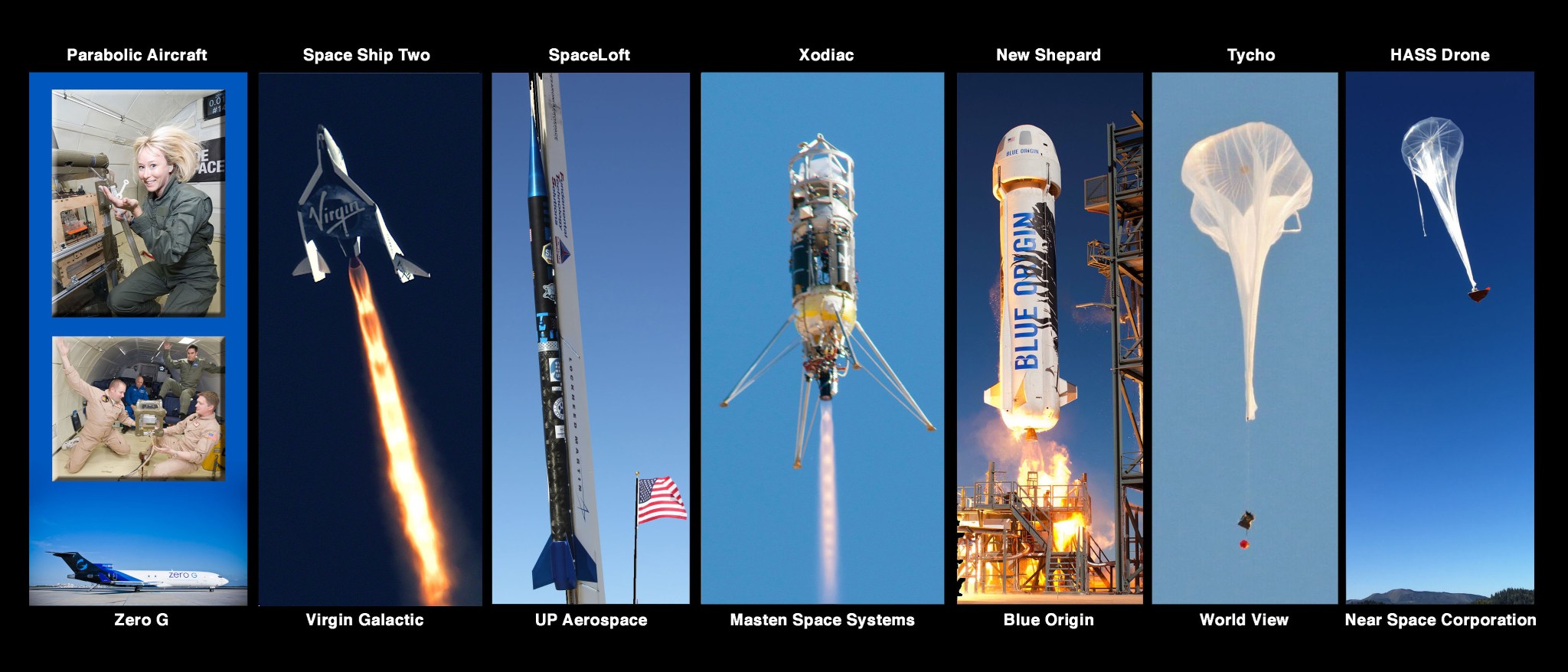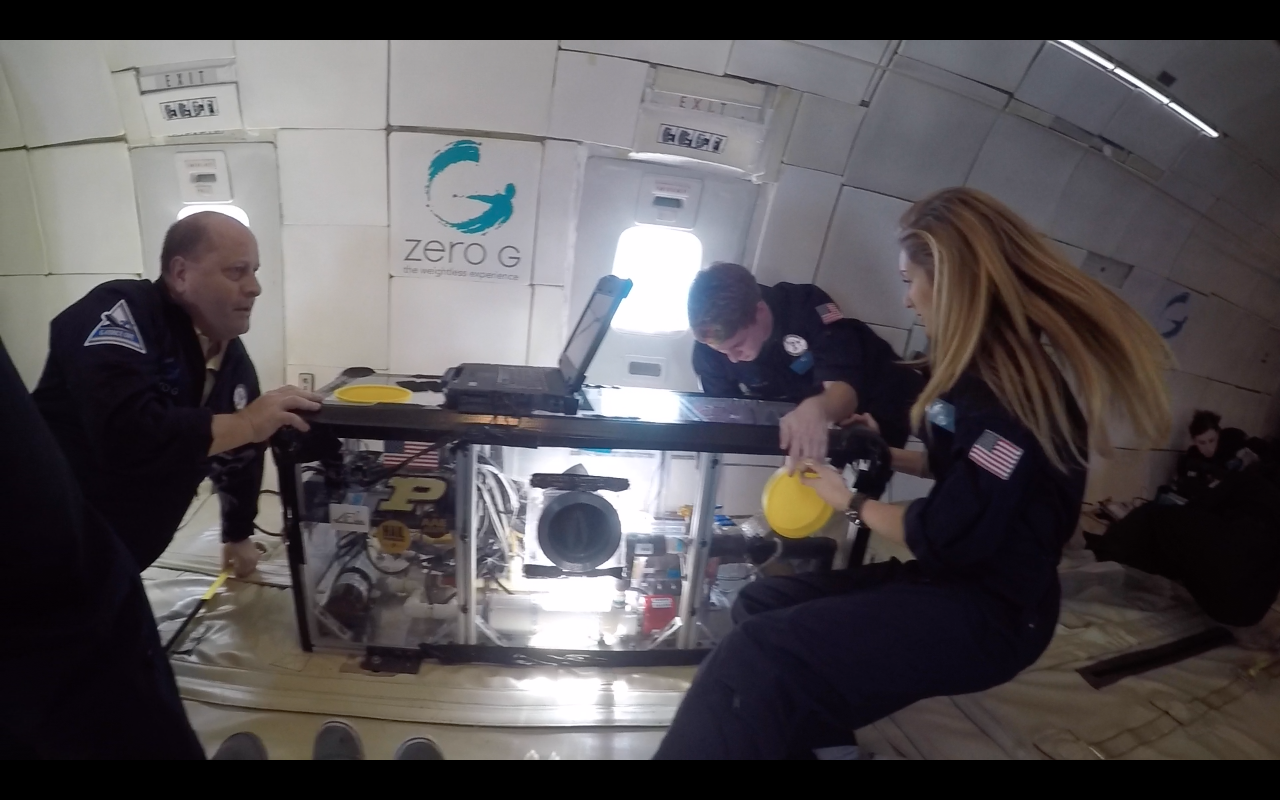Through NASA’s Space Technology Mission Directorate’s Flight Opportunities program, six promising space technologies have been selected to be tested on commercial low-gravity-simulating aircraft and suborbital rockets. The opportunity to fly on these vehicles helps advance technologies closer to practical use by taking them from a laboratory environment to the real world.
“The selected institutions will be able to demonstrate their technologies that are of interest to NASA in a much more realistic environment than what can be done using ground-based simulation facilities,” said Stephan Ord, the program technology manager for NASA’s Flight Opportunities program. “This program is a valuable platform for NASA to mature cutting-edge technologies that have the potential of supporting future exploration and agency mission needs.”
Two topics were included in this call for research. Under the first topic, which requested demonstration of space technology payloads, NASA selected five proposals:
- CubeSat Articulated Boom Option Optimization in Microgravity (CABOOM)
David Miles, principal investigator, University of Iowa, Iowa City
Demonstration of deploying a CubeSat boom arm with a magnetometer for surveying the Earth’s magnetic field. The zero-gravity test flight, which includes a test model mounted with optical sensors, will be used to characterize the deployment system and its repeatability. The flight provider will be Zero-G Corp.
- Investigation of Gravity Effects on Electrically Driven Liquid Film Boiling: A Microgravity Flight Campaign in Preparation of ISS Flight Experiment
Jamal Yagoobi, principal investigator, Worcester Polytechnic Institute, Massachusetts
Demonstration of a new type of thermal management technique that moves liquid and evacuates vapor by applying an electric field to the system. This approach could significantly enhance heat transfer when compared to current pumped-loop systems and enables the next generation of high power electronics. The proposed work is planned to be used to advance a NASA-funded experiment on the International Space Station in 2021. The flight provider will be Zero-G Corp.
- Suborbital Testing of Liquid Acquisition Devices for Cryogenic Fluid Management
Kevin Supak, principal investigator, Southwest Research Institute, San Antonio
Liquid acquisition devices are crucial for cryogenic fluid management in space to properly feed propellant from a tank to the rocket engine. This demonstration flight will validate models and predictions for a new technology using a tapered screen configuration to passively remove vapor bubbles from the liquid. The launch provider will be Blue Origin.
- Small-sat Propellant Management Technology
Steven Collicott, principal investigator, Purdue University, West Lafayette, Indiana
Demonstration of a suite of propellant tank shapes with propellant management devices to evaluate the zero-gravity control and draining performance of the system. The flight provider will be Zero-G Corp.
- Lightweight Strain-energy Deployed Spacecraft Booms
Mark Pankow, principal investigator, North Carolina State University, Raleigh
Demonstration of a new and potentially more reliable boom deployment system for spacecraft using a strain-driven mechanism. The booms could be applied to deploy systems such as solar arrays or solar sail arms. The flight provider will be Zero-G Corp.
NASA selected one proposal under the second topic, demonstration of vehicle capability enhancements and onboard research facilities for payload accommodation:
- Human Tended Space Biology: Enabling Suborbital Genomics and Gene Expression
Robert Ferl, principal investigator, University of Florida, Gainesville
Demonstration of Kennedy Space Center Fixation Tubes on a suborbital vehicle that could be used to study gene expression changes during transition from Earth gravity to microgravity and better understand flight effects on organisms. The launch providers will be Blue Origin and Virgin Galactic.
The selected demonstrations will receive awards for payload integration and flight costs, as well as limited payload development costs. These investments take technologies from the laboratory to a relevant flight environment, facilitate technology maturation, validate feasibility, reduce technical risks and enable infusion of key space technologies into multiple future space missions. The most recent call for proposals in this series, called the REDDI Flight Opportunities, opened on March 30, 2018.
The Flight Opportunities program is funded by NASA’s Space Technology Mission Directorate in Washington and managed at NASA’s Armstrong Flight Research Center in Edwards, California. NASA’s Ames Research Center in California’s Silicon Valley manages the solicitation and selection of technologies to be tested and demonstrated on commercial flight vehicles.
For more information on NASA’s Flight Opportunities program, visit:
https://www.nasa.gov/flightopportunities
Kimberly Minafra
Ames Research Center, Silicon Valley, California
650-604-2457
kimberly.minafra@nasa.gov
Leslie Williams
Armstrong Flight Research Center, Edwards, California
661-276-3893
leslie.a.williams@nasa.gov
































